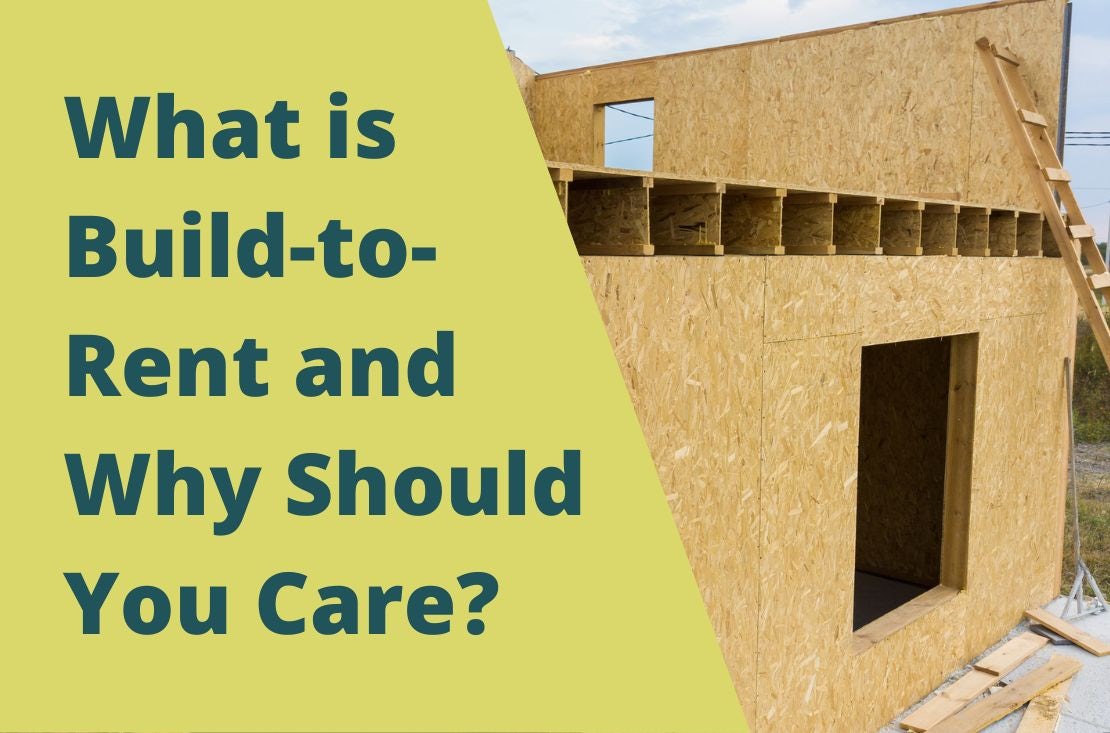Recently, build-to-rent (BTR) has been a regular topic for discussion in the Scottish property market.
If you’re not familiar with it, you’ll probably be hearing about it soon, as it’s definitely gaining momentum as an investment strategy.
As an experienced property professional, I think it’s a good time to discuss build-to-rent, and particularly, if you should care – especially in Scotland.
I also answer the question: What might the consequences of the growing trend for build-to-rent be for individual landlords?
Let’s take a look.
Build-to-rent: a little bit of background
According to the Sottish Government:
Build to Rent PRS (BTR) offers significant opportunities to complement existing housing delivery models and help to increase the overall rate of delivery of housing. BTR can contribute to the creation of well-designed, sustainable places, quickly and at scale. BTR is also a means of supporting key economic sectors in Scotland and its cities in particular. It can provide high-quality, purpose-built rented accommodation that will enhance the attractiveness of Scotland, for new and different developers and long-term investors at scale.”

Now the interesting additional comment they make is:
“The Scottish Government wants to encourage a growing BTR sector which provides high-quality, professionally-managed homes”
It’s clear that the focus here is on tenants and providing them with good quality rental housing in a social community setting, but the question must be asked:
Why is the Scottish Government so keen to support BTR properties but not private landlords who also wish to provide high-quality professionally-managed properties.
How does BTR differ from a private let?
Build-to-rent properties differ from traditional homes in a number of ways, characterised by:
- Single institutional ownership and on-site management of the entire development
- Individual units are self-contained and separately let.
- Residents have access to shared, communal facilities and on-site amenities integrated as part of the development.

Who are the build-to-rent landlords?
I thought it would be interesting to take a look at the dominant build-to-rent landlords and what their plans are.
As this article shows, the build-to-rent landlords are large institutions. Grainger PLC is currently seen as the largest player in the BTR sector, but it’s generally acknowledged that Lloyds Banking have plans to challenge this:
“(Lloyds) plans to purchase 50,000 homes over the next ten years, starting with the purchase of 10,000 homes by the end of 2025. The properties will be let out using the newly launched ‘Citra Living’ brand and would focus on newly built, high-end properties ‘
Other notable institutions are John Lewis, who are planning to build 10,000 homes over the next decade, Ikea, which is planning to enter the UK affordable homes marker, and major financial institutions such as M&G and Goldman Sachs.
A changing landscape
One of the major apprehensions that I share with many property professionals is the rate at which such build-to-rent blocks might sprout. In the past 12 years, more than 70,000 UK homes have been built for rent with 140,000 in the pipeline. This means 2% of all homes to rent in the UK are now BTR.
Some you might remember the way the property landscape changed in the ‘60s and ‘70s wave of developments. In the urgency of providing mass-level housing, things were done, let’s say… without adequate forethought. These changes are irreversible, and it goes without saying we don’t want to make the same mistakes again.
However, with investors and property developers keen to take advantage of the opportunities on offer, the concern is that history will repeat itself and we may see a rush to erect these units whilst overlooking long-term town planning.
The impact on tenants
The policy hopes to guard the interest of tenants by closing the supply and demand gap of available rental properties. Having a bigger selection of accommodation can only be a good thing for tenants and the whole of the sector.
Clearly, the build-to-rent blocks offer tenants a different type of accommodation. What I’m keen to know is how strong the safeguards are going to be in place to ensure these rental blocks and their facilities stay maintained, safe and appealing for the residents who live there. Can a BTR institutional landlord really give the tenant a better experience than tentative private landlords?

The impact on private landlords
I don’t see build-to-rent affecting the rental market significantly. Although it targets a similar demographic of students and private tenants, the housing crisis means that the provision of additional housing options is welcomed. Purpose Built Student Accommodation (PBSA) has been around for a while without impacting the private landlords who regularly let to students.
University students and young professionals won’t, in my opinion, cause a problem for the PRS if they flock to these new builds. But, time will tell.
Looking at a positive outcome, I see this gradually settle into a niche rental housing system, without negatively impacting the traditional rental market. In fact, I believe it should work together.
Some of you may see this as just another ploy to make life harder for landlords along with increased taxes and regulation. I get that, but closing the supply and demand gap with build-to-rent needn’t be a threat to the PRS.
Quite the opposite, in fact. The provision of good quality BTR accommodation may force private landlords to regularly review the condition of their properties to make sure they can compete when marketing as a buy-to-let.
Advice from the property pros

It is an undeniable fact that without private property landlords, letting agents, and our entire ecosystem this housing supply and demand issue can not be adequately addressed. We are an essential and crucial component of the mix.
The Scottish Government is trying to help the situation by allowing these build-to-rent blocks to ease the burden of the housing crisis. This needn’t be a threat to the PRS as long as the supporting infrastructure is in place and the Scottish Government understands the need to encourage BTR investment as well as private landlords.
The recent unexpected announcement by the Scottish Government to temporarily freeze rents has resulted in some BTR developers becoming unsettled about how a similar longer term policy may impact the BTR business model and investment. Tenants really need the Scottish Government to development long-term strategies which increases their housing options rather than diminish them. All eyes will be on Scottish Goverment’s Housing Bill 2023.
In summary…
Build-to-rent is growing slowly across Scotland – and might change the landscape in different ways. It’s aimed at closing the rental property supply gap and to ensure better regulated housing societies for tenants.
As for the impact on private landlords, you shouldn’t have to worry. If anything, it’s a great stage to tighten up our acts to be more professional and proactive about managing our rental properties. If you follow our blog on best practices to maintain a professional, win-win situation for you and your tenants, manage your property well, and keep your ear to the ground, you’ll be fine.
If you need any advice related to property management, portfolio creation, or anything to do with the PRS in general, please feel free to get in touch.
Written by Ross MacDonald, Director of Sales & Cofounder of Portolio
Get in touch on 07388 361 564 or email to [email protected]



Comments